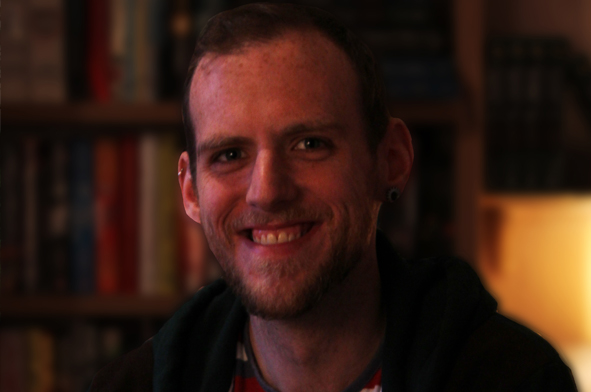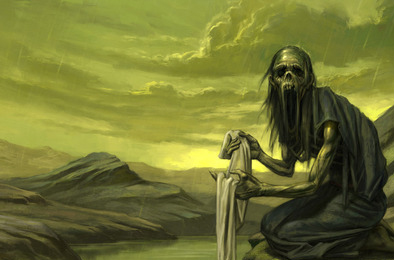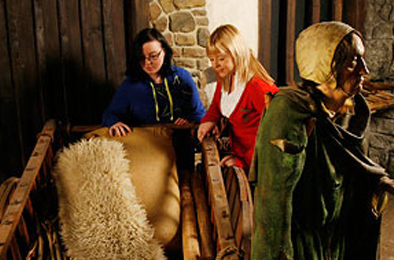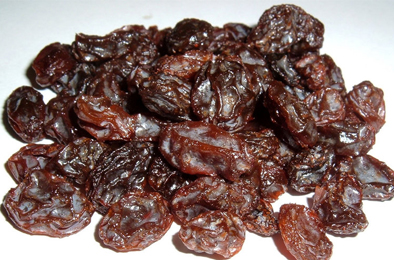
Frequently Asked Questions
Questions on 'Arthur Quinn'When will the other books in the trilogy be out?
Alan:
'Book Two ('Arthur Quinn and the Fenris Wolf') is due September 2012 while the final book should be released September 2013.'
Where did you get the idea for Arthur Quinn?
Alan:
'Two places. First of all, I saw a documentary about the River Poddle and I found it very interesting. I wondered what would happen if the Vikings had hidden something down there.
Secondly, I really wanted to see a giant monster wreaking havoc in Dublin!'
How do you pronounce Loki and Jormungand?
Alan:
'I'm asked this question a lot! Loki is an easy one; it's pronounced "low-key". But Jormungand is a bit more complicated. It's got a soft "j" that has a "y" sound so the word is pronounced "yor-mun-gand".'
Will there be more than just three books in the series?
Alan:
'At the minute I have no plans for more than three books. I think the story has a satisfying end in the upcoming Book Three (I won't say whether it's a happy or sad ending but I will say it's satisfying!) However, if I did get another story about Arthur and his world, who knows! There may still be more Arthur adventures after Book Three but I haven't planned any yet.
That said, there are still a LOT more adventures for Arthur and his friends coming in Books Two and Three!'
Will there be different characters in the future?
Alan:
'All the books focus on Arthur, his friends and Loki. But there are a few brand new characters in book two ('Arthur Quinn and the Fenris Wolf') that I really like; both good guys and villains. I can't really say too much about any of them them but I will say that there are a couple of new students in Arthur's class. In book three there aren't that many more new characters; they all seem to appear in Fenris Wolf!'
Why are there no pictures in the book?
Alan:
'I did think about putting pictures in very briefly. But in the end, I decided that illustrations wouldn't work. I think that the imagination is much stronger than anything an illustration can show you. If we included illustrations of the Jormungand, for instance, that's how you would see the beast forever. Whereas if you only have the descriptions in the book to work from, you could imagine something much bigger, much scarier and much more real than what the illustration could show you.'
Where do you do your Viking research?
Alan:
'Most of my research was down to one book: The Penquin Book of Norse Myths. It's got all the legends in it and was a great reference while I was writing "Arthur Quinn".
The rest of my research came from libraries and visits to Dublinia and the National Museum.'
How do you start a book properly?
Alan:
'Once I have the idea for a book, I like to spend a bit of time thinking it over. This usually entails going for walks with my iPod on and going over the plot in my head. I could spend anything from sixe weeks to six months just doing this.
When I happy with the story, I'll sit down and start the actual writing. By the time I get to this stage, I know the story so well that it doesn't take me that long; about 4-6 weeks to write the first draft.'
Do you do school visits?
Alan:
'I love doing school/library/bookshop visits! You can find more information and contact me about visiting your school here!'
Do you have any other books?
Alan:
'At the minute, the only books that are published are the Arthur Quinn series. So, Arthur Quinn and the World Serpent is out now; Arthur Quinn and the Fenris Wolf is due August 2012 and Book Three in the series will be out the following year. However, I have LOADS of ideas for other books I want to write so watch this space!'
Are you going to write different genres after Arthur Quinn?
Alan:
'Absolutely! I have a few plans already (like a pretty dark, grim book for older teenagers!) For me, I've always been interested in telling lots of different types of stories. Although anything with a bit of magic in it is certainly my favourite!'
What made you start writing?
Alan:
'This is a tough question to answer! I made stories up from as young as I can remember so I'm not really sure. It's just something I love doing!'
What year were you born and where?
Alan:
'I was born in 1983 (a long time ago, I know!!) in Sligo General Hospital.'
What is your favourite pizza topping?
Alan:
'I'm a huge fan of the classic margharita - so just cheese and tomato for me!'
What is your favourite book?
Alan:
'That's a really tough question as I have loads of favourites! I love everything that Neil Gaiman has written (for instance Coraline, American Gods, etc). I also love Matilda by Roald Dahl and the Fudge series by Judy Blume. But one of my absolute favourites is a grown up book called Slaughterhouse-Five by Kurt Vonnegut. It's kind of difficult to describe but it's deals with World War II, time travel and aliens.'
Who is your favourite author and why?
Alan:
'My absolutely favourite author is Neil Gaiman. I really like the way he mixes fantasy and the real world plus he has a real passion for storytelling!'
Have you ever gone on any adventures yourself?
Alan:
'None as exciting as Arthur!
My biggest adventure was when I went inter-railing across Europe with two friends. I saw a lot of the continent and it was great fun!'
Do you have any pets?
Alan:
'Not right now. Growing up, we had a dog and also a couple of goldfish. But I really would love to get a pet dog again soon!'
Was becoming a writer was the career you have always wanted?
Alan:
'I always thought that one day I would write a book certainly. My career plans changed as I was growing up - usually moving between being a writer and a filmmaker. I see filmmaking as being very similar to being an author. At the end of the day, they're both concerned with storytelling.'



Alan Early was born in a small town in Leitrim, Ireland...

...but now lives in Dublin...

...in the sometimes posh and leafy suburb of Ranelagh.

After school, Alan studied in the National Film School, Dun Laoghaire.

Upon graduation, he co-founded Annville Films and has made a few shorts, animations and various other moving pictures.

From an early age he would write and illustrate short stories...

...about Banshees and ghost animals and whatever else struck his imagination.

His first attempt at writing a novel was while he was still at school and was about, amongst other things, a telepathic goldfish.

Age 10, he visited Dublinia, a Viking museum and so began an interest in Norse lore. It also began a habit of staring into the faces of wax works, waiting for them to blink.

His favourite books are those that have pages made of paper and he especially like ones that have a beginning, middle and end.

He's a picky eater but, despite that, quite likes raisins.

Oh yes, and he dislikes writing biographies about myself.
Learn even more about Alan in this video!




